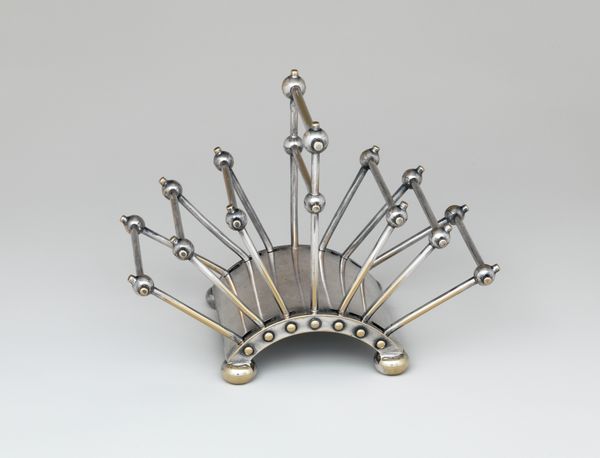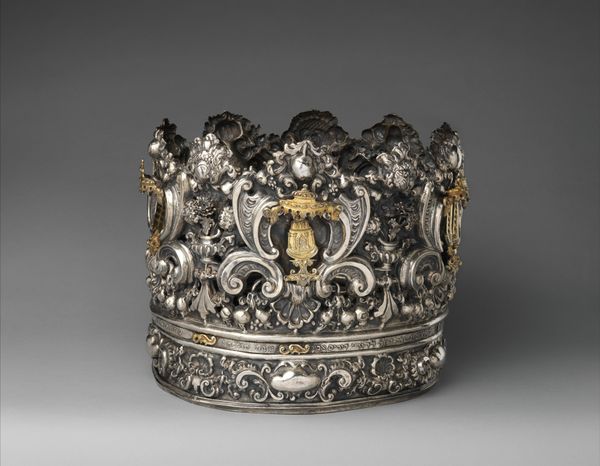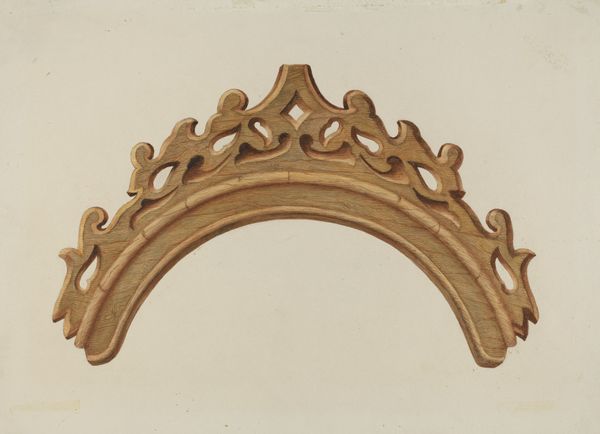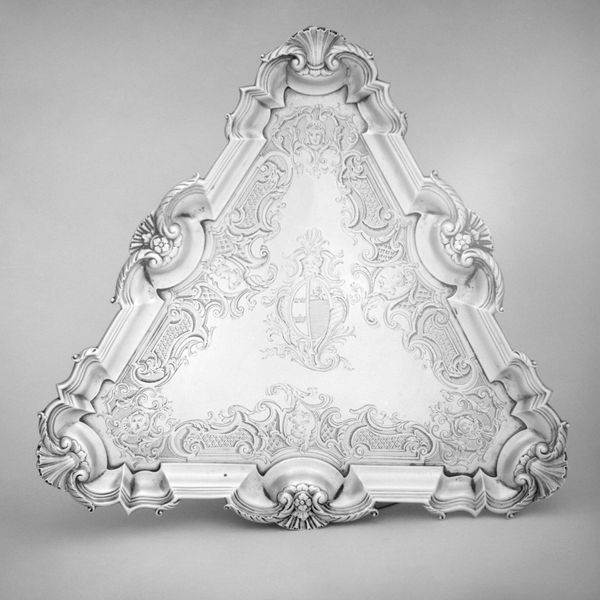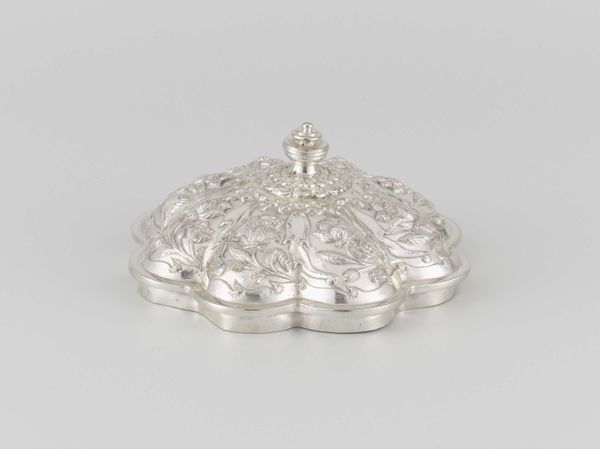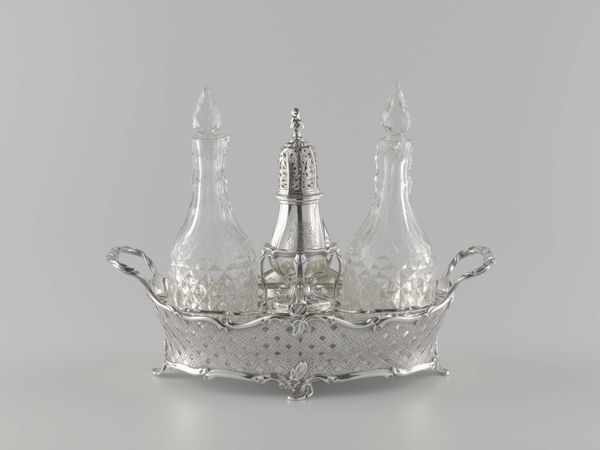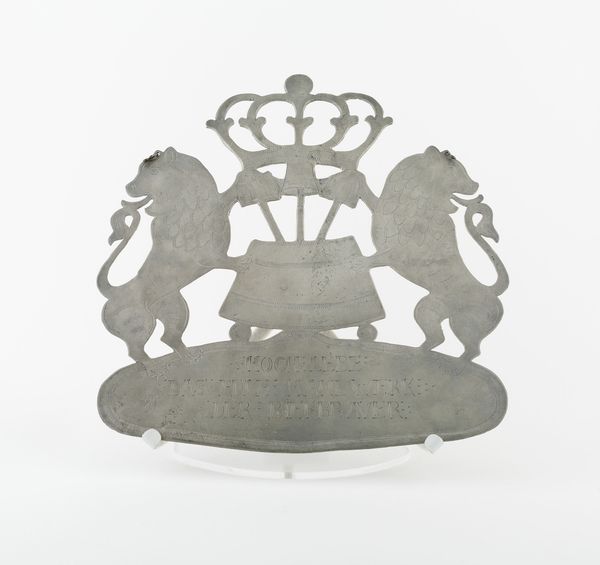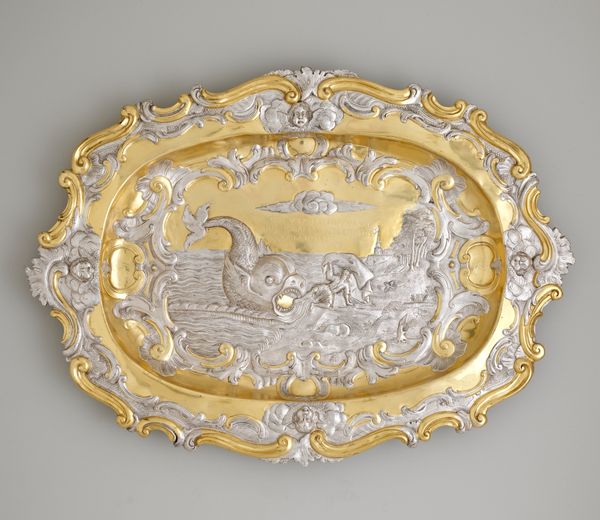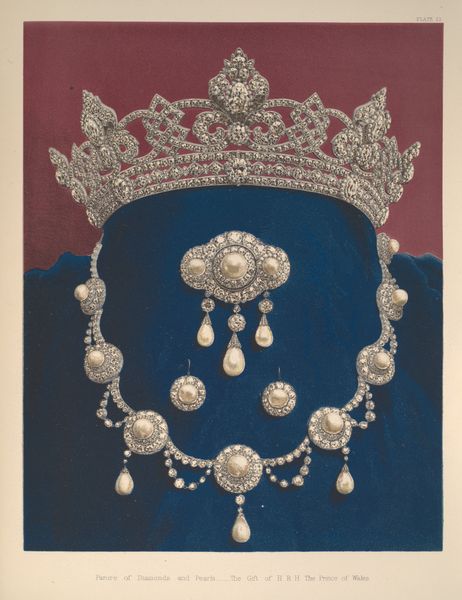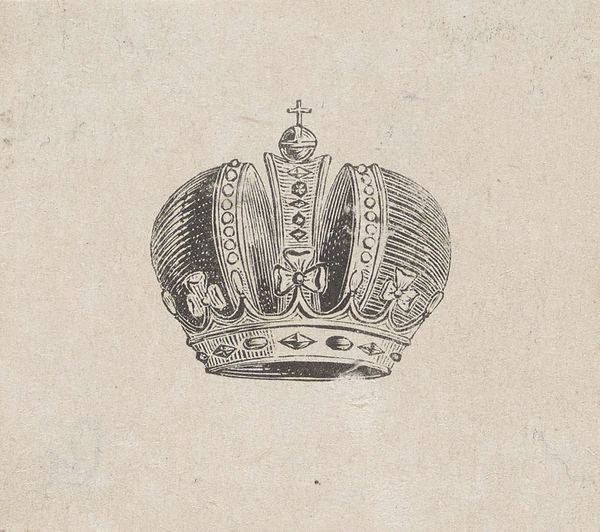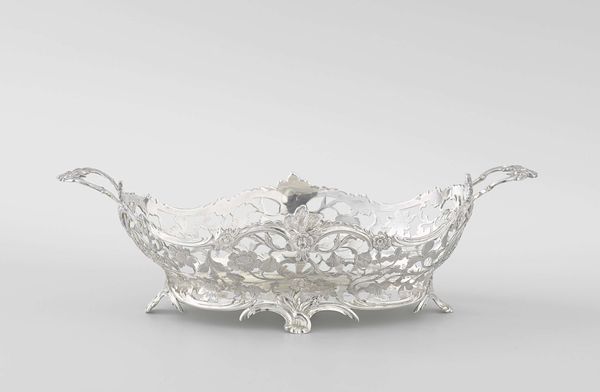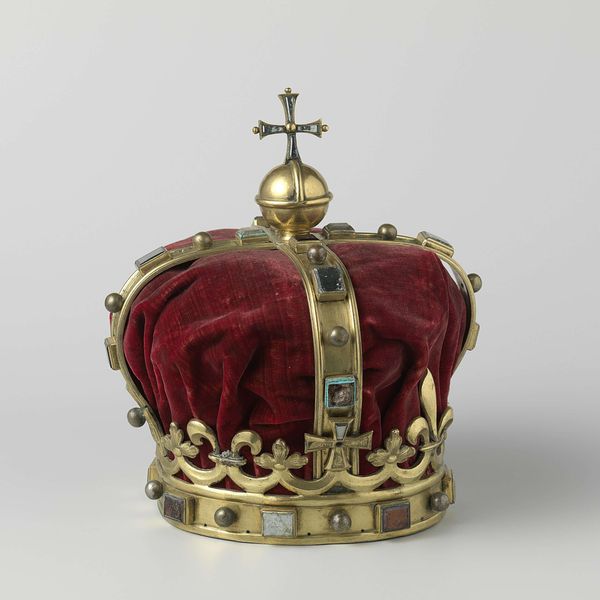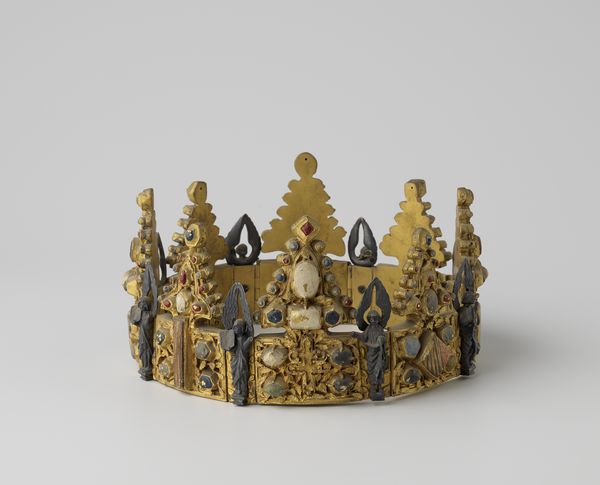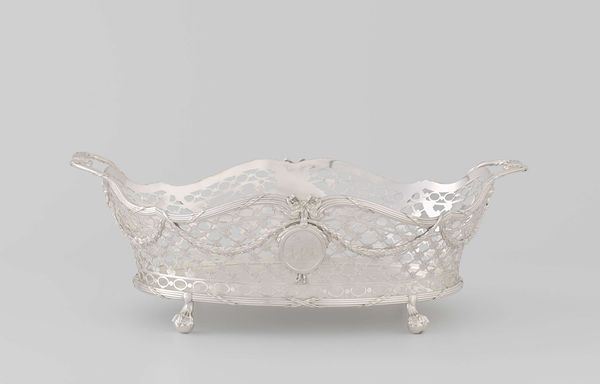
drawing, textile
#
drawing
#
medieval
#
textile
#
pattern design
#
geometric
#
decorative-art
Dimensions: height 5 cm, width 5.5 cm
Copyright: Rijks Museum: Open Domain
This is Bôval-De Beck's needle lace design with a crown motif. While we don't know the exact date this piece was created, bobbin and needle lace had a rich social history in parts of Europe such as the Netherlands from the 16th century onwards. Sumptuary laws regulated the wearing of lace, making it a marker of status, wealth, and power. Lace schools for young women sprung up, often under the patronage of religious institutions. The crown in this design is a symbol of power and authority. We might ask, who is being crowned here? Is this design celebrating royal power? Or is the use of lace subverting that power, domesticating it, feminizing it? Perhaps the artist is questioning the very notion of inherited status. To understand the work better, we would need to delve into the history of lace production, the lives of lace makers, and the changing social meanings of lace across different periods. It's only by situating art in its social and institutional context that we can truly appreciate its complexities.
Comments
No comments
Be the first to comment and join the conversation on the ultimate creative platform.
